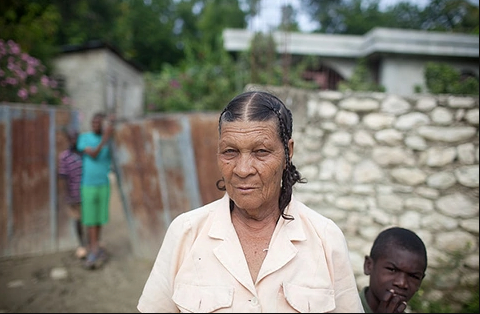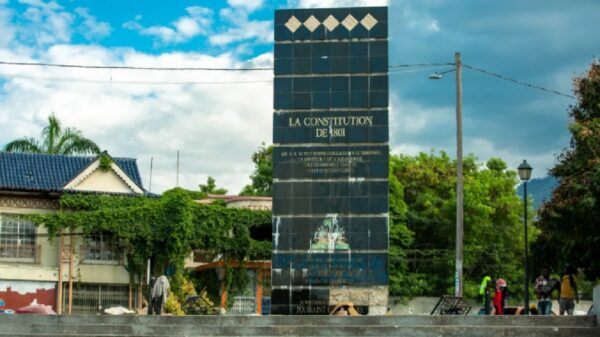www.haitiantimes.com
By A Guest Arthur

NEW YORK — May has arrived, marking Haitian Heritage Month, a time to celebrate various aspects of Haitian history and culture. An often overlooked reality in migration narratives, is how Haiti has served as a destination for certain groups of people seeking refuge from other parts of the globe.
People of various ethnicities and nationalities once immigrated to Haiti and contributed to the growth of the country and its culture. This article aims to highlight these groups during this month, starting off with the Polish people.
The Poles
During the late 1790s, thousands of Poles fled from dysfunctional Prussian rule to France. Many soldiers among these Polish emigrés joined the Napoleonic Army. By 1797, so many Poles had joined, a separate military company was created for them known as the Dąbrowski Legions .
The Polish Legions fought alongside France in many wars between 1797 and 1815, including the uprising in Haiti. In 1802, 11 years after the beginning of the Haitian Revolution, Napoleon sent the Dąbrowski Legions, about 5,200 soldiers, to fight in Saint Domingue. He told the soldiers they were going to quell a prison riot that had started on the island.
Within two years, many of the Polish soldiers died in battle or of disease. The roughly 1,000 survivors soon realized the Haitians dubbed as “criminals” were in fact fighting to gain their freedom, something the Poles fought for in their own country. Some then purposefully disobeyed France’s orders to fight and kill the Haitians.
After Haiti gained independence in 1804, Emperor Jean-Jaques Dessalines granted citizenship and land to these Polish allies – “the white negroes of Europe.” Many of the Poles settled as farmers in the town of Cazale, where to this day Polish heritage is visible, , with many Cazale residents having heavy Caucasian features and owning artifacts from their Polish ancestors.

The Germans
Germans have lived in Haiti since the 18th century, ever since about 1,000 were invited by the French to towns such as Bombardopolis in northwestern Haiti for agricultural commerce. The first big wave of Germans however, came in the early 19th century, when Germany saw Haiti as an opportunity to profit from the Americas.
In the 1830s, German merchants gained citizenship by marrying into the Haitian elite. Soon enough, they began setting up trade between Haiti and Europe. By 1910, Haiti’s roughly 200 German families controlled a disproportionate amount of the economy,
according to Doctor Brenda Plummer . This commerce developed Haitian international trade and massively boosted the finances of the state.
During the world wars and the 19-year U.S. occupation of Haiti, many Germans left Haiti out of fear they would be prosecuted by the Americans. However, most returned to Haiti in the 1950s to regain their confiscated homes and businesses.
Cornelia Schütt, the Haitian singer-songwriter better known as TiCorn, was born in 1953 to German parents. As one of the most beloved vocal artists of her time, the Cap-Haitien native is best known for such 80s hits as “Sous le ciel d’Haiti, “Haiti Chérie”, “Colibri” and “Karenaj.” She continues to compose, produce and perform Haitian music around the world and currently resides in Hamburg, Germany and Spain.
Thanks to Haitian-German legends such as TiCorn, world renowned classical composer Werner Jägerhuber and international soccer player Joe Gaetjens, the German-Haitian legacy is alive to this day.
The Arabs
The first Arabs to set foot in Haiti were Lebanese immigrants fleeing civil war in the 1880s. Boats on their way to the U.S. stopped in Haiti and many Lebanese decided to stay on the island.
Soon after came Syrian, Jordanian and Palestinian immigrants. A majority made a living with small businesses throughout Haiti’s provinces .
During World War I, after the Germans lost control of Haitian commerce, the Arabs seized the opportunity to gain power in the economy. Alongside a small Chinese community, the Arabs controlled Haiti’s business sector.
At the time, many wealthy mulattos began protesting against the foreign control of commerce but to no avail.
In modern day Haiti, about 257,000 Arabs live in the country.
The Chinese
The Chinese arrived in Haiti in separate waves between the 1890s and 1950s.
The first group to arrive in the late 19th century were Chinese refugees fleeing their crumbling dynasty. More came in the 1910s, fleeing the 1911 Revolution. Both the Chinese and Arabs were treated poorly due to anti-foreign sentiments of the time and many Chinese slept on the streets.
However, during the U.S. occupation, the Americans invited many Chinese to the country. Among those who heeded the assistance was the family of Essud Fungcap, a Haitian-Chinese painter and musician. Many Chinese families then began to establish bakeries, laundromats, supermarkets and restaurants. They were also more open than others to intermarry with native Haitians.
Chinese families continued to come into Haiti until the 1960s and 1970s, when most Chinese-Haitians left the country due to the Duvalier regime.









You must be logged in to post a comment Login